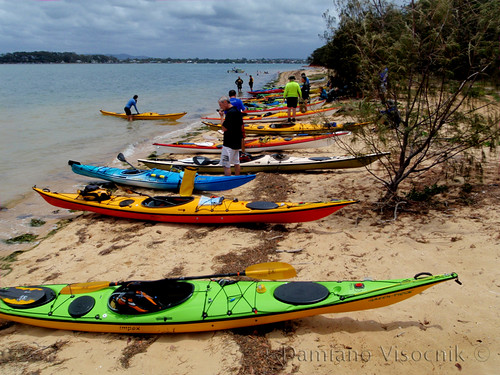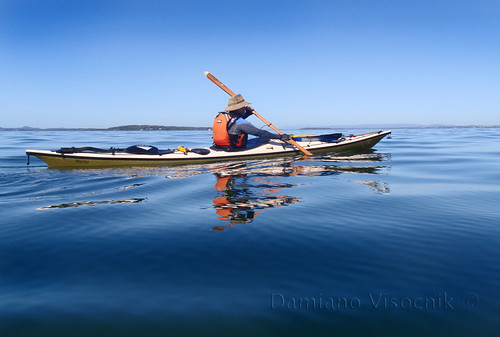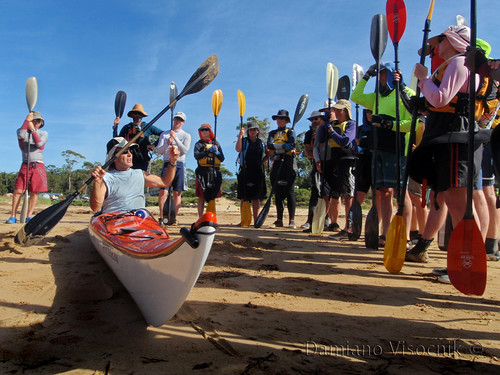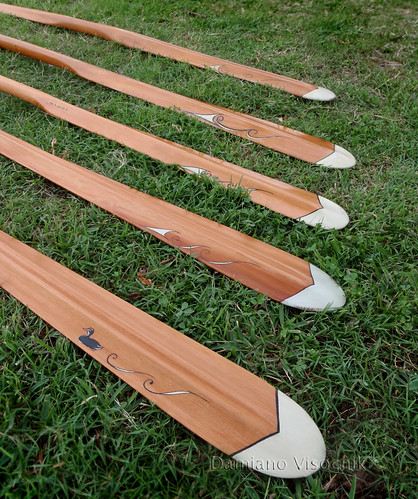Most of the population lives around the coastline of this great island and it was only a matter of time that sea kayaking would see an explosion in popularity.
A few years ago I started sea kayaking as diversion to my bushwalking (backpacking) passion that was put on hold during the hottest months of summer.
And like most of paddlers I taught myself the basic handling on the kayak.
I have respect for the water (used to windsurf years ago) and I realized that staying close to shore and always wearing my life jacket was imperative if I wanted to stay safe.
The passion increased and eventually I started to have company on the water.
I figured it would be safer to have somebody there if I eventually capsized. However, to learn good skills before something would happen, I needed to hook up with better paddlers.
A newly formed sea kayak Club was the perfect environment for me to meet paddlers of higher skill level and seek instruction from them.
The Club was a very friendly place with many paddlers offering their knowledge to me for the love of the sport.

Club training day (without instructor)
I started to venture further away from the shore and eventually wanted to tackle the surf.
I still remember the bliss experience when two senior Club members took me in the (baby) surf and looked after me. Needless to say I did capsize on my second wave ride. Within a few seconds they were there and quickly helped me to reenter my kayak. Suddenly I was back again and learning how to prevent my kayak from broaching.
All that was done in a controlled environment and the two paddlers were not instructors: they just wanted to pass on their skill for the joy of seeing another person advance.
I am still thankful to them for giving me their time and help in gaining essential skills that would make me a safer paddler.
I joined that Club and continued to advance.
Some formal training with a certified instructor was undertaken and eventually I started leading trips on the water for my fellow Club members.

Club member learning formal skills from instructor
The policy in our Club is that a leader must be qualified to lead others and depending on conditions, environment and distance of paddle, a different level of skill is needed.
Participants on Club trips were always welcome.
Easier paddles will require low skills levels while only demanding paddles (in surf conditions) would require the paddler being formally certified to be able to participate.
It kind made sense to me: easy paddles are suitable for beginners where skills can be acquired before having to venture out in the “big stuff”. The sheltered waters of the bay interspersed with many islands allow for trips of low skill level. Beginner trips can be safely conducted when conditions are benign. On calm days many kayakers can be found in the safe channels between the islands: if conditions deteriorate the shore is usually not more than ½ hour paddle’s away.

typical day on the Bay (Southern area)
Lately there have been some rumors about the need to license all paddlers.
It was speculated that all kayakers that belong to a Club should be licensed (just like a driving license) to be able to be on the water.
A local instructor, after a day of tuition at one of the kayaking clubs pronounced that the members of that Club should not paddle anywhere but the rivers, until they gained the necessary instructions (incidentally probably from him) to paddle again in the bay (where they have been doing it for years).
That made me question: if the instructor is pushing for a formal license for a paddler to be able to participate in ANY paddle in the sea he probably will generate himself substantial work and revenue (the instructions obviously will not be free of charge).
While formal assessment and skills are surely needed in demanding environments, in my opinion, a paddling license (certification) to undertake the simplest and safe paddle in a structured group of paddlers (with a recognized suitable leader) is probably overkill.
I do advocate for safe paddling and applaud when individuals want to step up and gain better skills and possible certifications but it should be left to the individuals to make that choice.
A policy where ALL paddlers will suddenly have to hold a license to be able to be on the water, or to paddle with a Club in mild conditions is just ludicrous.
If the national body that oversees the development of the kayaking sport and promotes safe paddling will enforce this rumored “license” I have the feeling that current and future members will be driven away from joining formal Clubs and prefer to paddle in informal groups (something that seems to be growing in popularity).
While the threat of legal action in case of an incident is one of the reasons for me joining a Club (and therefore be insured) I believe that the introduction of forced licensing will probably result in a decline of membership and possible lower the skill level of the paddling community.

The camaraderie of helping each other out and learning from each other is obviously one of the basic forms of skill development.
At a lower level paddles in sheltered waters is probably all it’s needed as long as safety and group dynamics are observed.
I don’t believe that forced licensing is the answer to a better paddling community.

.jpg)

+copy.jpg)
.jpg)
.jpg)
.jpg)


.jpg)




